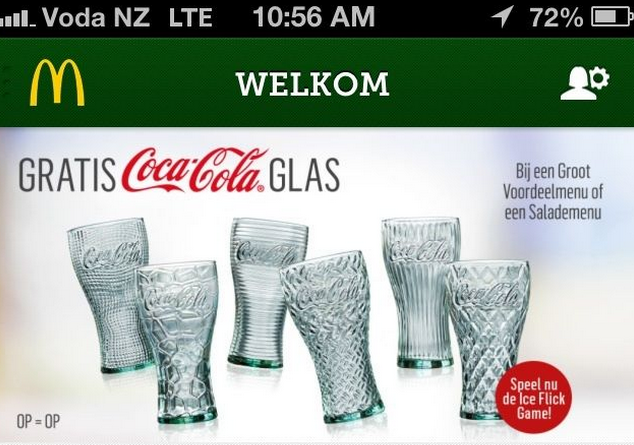
Bricks and mortar retailers are developing mobile apps to help level the playing field with online behemoths like Amazon and ASOS.
In 2012 less than percent of department stores in the ‘Stores’ Top 100 Retailer list had their own mobile app. Just 18 months later, they all had one.
Investment by retailers in mobile (including mobile apps) is expected to double between 2013 and 2015 from $28 billion to $55b dollars globally according to Juniper Research. Retail apps aim to add value in three ways:
- Increase foot traffic
- Increase average transaction value
- Increase loyalty and lifetime value
Successful international retail apps
Globally, there have been some impressive achievements from retailers using mobile apps to drive sales growth.
Walmart recently reported that consumers who downloaded their app not only spent 40 percent more but also shopped in store twice as much as the average shopper.
McDonald’s in the Netherlands use their mobile app to drive foot traffic and increase average tray value with personalised vouchers and other relevant content. This has increased redemption rates by more than 700 percent and increased transaction value by 47 percent when a voucher is used.
Walgreens report similar numbers. According to Tim McCauley, who is their Senior Director of Mobile Commerce, people who use Walgreens apps spend four times more on average than other Walgreens customers.
Target executives recently told investors that users of their popular “Cartwheel app” spend 30 percent more per visit and visit more often resulting in hundreds of millions in additional sales.
Importance of knowing your customers
Personalisation lies at the heart of every good retail app and these examples are no exception. Any retailer can create a mobile app, but not every app is capable of making shopping better, faster and cheaper with personal and relevant content that drives sales.
The apps that do it well, like Walgreens and McDonald’s, are powered by big data platforms with the scale and reliability to collect millions of discrete data points about customers every day. When historic data like purchase history is combined with live data like location, it is possible to get just the right message to just the right person at just the right time.
Personalisation is everything
Starbucks provide one of the best retail examples of a successful mobile app. More than 10 million people actively use the app, twice the number from only a year ago. Mobile payments account for more than 14 percent of Starbucks transactions in North America or more than 5 million mobile payments a week.
Starbucks are using mobile to significantly improve customer experience. It’s all about personalisation according to the company’s chief operations officers, Troy Alstead. Recently he stated “we’re just beginning to leverage our vast My Starbucks Rewards member base to deliver meaningful marketing and promotions to the right person at the right time.”
NZ a little slow on the uptake
Here in NZ we have been a little slow on the uptake. A quick scan through the app store reveals that just four of twenty leading NZ retailers have an iOS app and even some of those are still quite basic. Why have so few NZ retailers got a mobile app?
The barriers are…
The answer is, for most marketers the numbers don’t add up. Building and marketing apps is expensive. Particularly the ones that make shopping better, faster and cheaper with personalised and relevant content. Successful retail apps like this need a platform that can process large amounts of data in real time. These cost a lot to build and then, of course, there is New Zealand’s relatively small population.
So, if you’re forecasting less than 50,000 active users and the estimated total cost of the app is well over $500,000, then it’s hard to get stakeholder approval. And therein lies the problem. Until now a decent ROI for bricks and mortar retail apps in NZ has been elusive.
The dawn Of The Planet Of The Apps
All this is changing. Software-as-a-service companies powered by cloud technology can provide today’s business owners with access to best-in-class mobile marketing at a fraction of what it would cost them to develop similar capabilities themselves.
The retail apps that these specialists provide are a completely new breed. Gone are the expensive up front costs, the months and months of planning, scoping, designing and building. Gone are months of integrating, testing and soft launches and gone are mobile apps that can’t adapt to individual customer preferences. Now retailers can launch a proven app that is ready to go in just a matter of weeks.
Many NZ retailers have had mobile on their agenda for years. Retail apps, however, have been conspicuously absent due to the high cost of developing and maintaining them. All this is likely to change in the coming months as retailers realise just how easy it is to get up and running with a mobile app that drives foot traffic, increases average transaction value and improves customer loyalty. Mark down 2015 as the dawn of the planet of the apps for bricks and mortar retailers in New Zealand.
The writer is Business Strategy director at VMob.




